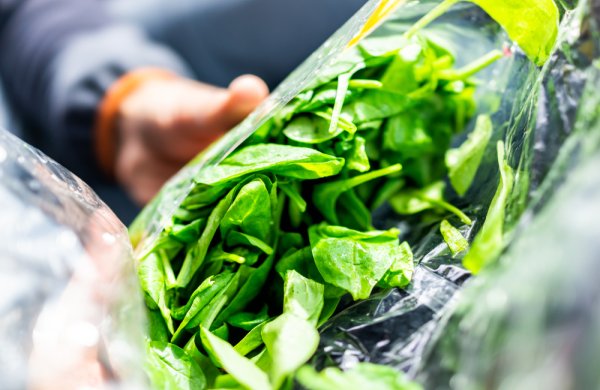
Roadmap for more sustainable solutions for storing and packaging vegetables and fruit
What is the most sustainable alternative to my current vegetable and fruit packaging? This is a commonly asked question by packaging companies, especially since the implementation of the EU Single Use Plastic directive. To provide a faster answer, Wageningen University & Research has developed a practical roadmap with solutions varying from leaving out packaging altogether to the use of circular alternatives.
“The search for a more sustainable alternative for current packaging is nearly always a custom task,” says Ernst Woltering, expertise leader in Postharvest Physiology at Wageningen University & Research. “This roadmap gives companies an insight into the various types of solutions available. The first question is always: ‘can the product do without packaging’? Although the social pressure for fewer (fossil-based) plastics for vegetables and fruit is increasing, you most often can’t just omit it without consequences. In many chains this would lead to more product losses.”
Reducing dehydration
Packaging protects products in the chain against dehydration. Leaf vegetables (lettuce, endives) and fruiting vegetables (capsicum, cucumber and, to a lesser extent, tomato) are particularly prone to losing moisture, with negative effects on quality: the product looks less fresh and loses its firmness. This does not apply as much to products with thicker peels or a protective wax layer such as apples, pears and bananas. Fresh-cut products should always be packaged to prevent rapid quality losses.
Slowing down the aging process
Packaging also keeps products fresh for longer. The activity of the product within the closed packaging changes the gaseous atmosphere which slows down breathing and aging. The packaging has other functions, too, such as protecting the product from damage, aspects related to ease of use and hygiene, the provision of product information, and improving the distinctness and visual appeal of products.
Alternatives for packaging
“There are plenty of alternatives with less plastic or different packaging material for many packaged products,” Woltering continues. “Sometimes the chain can be conditioned in such a way that quality losses are kept to a minimum. This is mainly achieved by storing and transporting products at the optimal temperature and humidity. Storage conditions can be further improved by removing the ripening hormone ethylene from the storage atmosphere and optimising oxygen and CO2 concentrations. While this minimises quality losses, it is not always possible to optimally ‘condition’ the entire chain.”
Other alternatives for packaging that are suitable for specific links in the chain include the use of (edible) coatings. A coating is a thin layer of material that is added to the product via dipping or spraying. The effect is the same as for plastic: it prevents moisture loss and modifies the internal gas atmosphere. It can even be used to add product information. There are already many (edible and biobased) coatings commercially available, but the actual impact on product quality and losses in the chain, compared to regular plastic packaging, has yet to be sufficiently studied.
Increasing package sustainability
Marieke Brouwer, Wageningen scientist in sustainable packaging: “Sometimes, chain conditioning or the use of coatings cannot sufficiently guarantee the quality of the product. In these cases, we should consider sustainable alternatives for the current packaging. We can do this in three ways: reducing the packaging weight, using renewable resources, and making the packaging (circular) recyclable. We should include the entire packaging chain in this consideration: from design and optimal product protection to the purchasing behaviour of consumers and the processing of the packaging waste.”
Proper balance
“We look for the most sustainable solution for each product, product group and related chain,” says Woltering. “Can we leave out the packaging altogether or are there alternatives? We always weigh the environmental benefits (carbon footprint) and circularity against any quality reductions (food waste). The roadmap helps us find a proper balance between sustainability, circularity, product quality and costs.”
Working on a sustainable food chain
For more information on the most sustainable packaging options available today feel free to contact our experts: